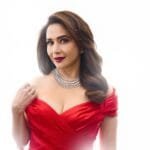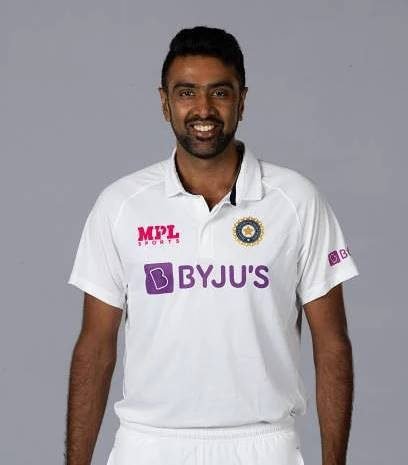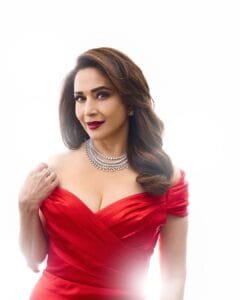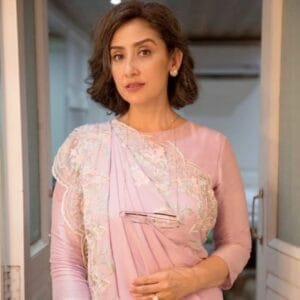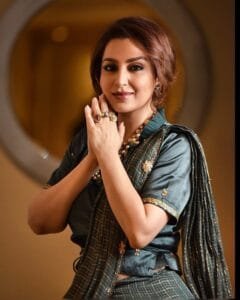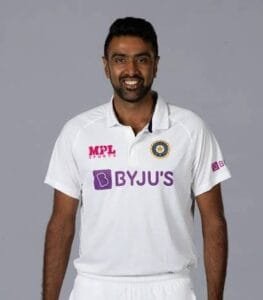
Biography
Famous Biographies of india

So What is a Biography ?
A biography is an in-depth account of a person’s life written by someone else, distinct from an autobiography, which is written by the person themselves. The biography explores various dimensions of a person’s life, including their early years, personal experiences, accomplishments, challenges, and often their broader impact on society or history. Biographies serve as a powerful way to understand both the individual and the time in which they lived, often revealing how personal and external forces shaped their lives.
Purpose and Importance of Biographies
Biographies play a significant role in literature and education, providing insights into the lives of individuals who have made notable contributions in various fields such as politics, science, art, literature, and more. These works help to preserve the legacies of influential people and inspire others by showcasing their struggles, achievements, and sometimes their failures. Through biographical works, readers gain a deeper understanding of the person’s personality, their motivations, and the context in which they operated.
Biographies are not limited to famous individuals. In fact, many biographies are written about people who may not be widely known but whose lives had a meaningful impact on their community or their field. The genre, therefore, serves as a broader historical record, preserving the stories of diverse individuals.
Types of Biographies
- Authorized Biography: An authorized biography is written with the subject’s permission and often with their cooperation. This type of biography allows the author to have access to private documents, personal interviews, and insights that might not otherwise be available. While this cooperation can provide rich, detailed accounts, it can sometimes lead to the omission of negative or controversial aspects of the subject’s life, creating a more favorable portrait.
- Unauthorized Biography: An unauthorized biography is written without the subject’s approval or involvement. These works can be more critical or balanced, as the biographer may have more freedom to explore all facets of the subject’s life, including controversial or less flattering aspects. However, the lack of direct access to the subject or their close associates can sometimes result in a lack of depth or reliance on secondary sources.
- Historical Biography: This type focuses on individuals from the past, offering detailed accounts of their life in the context of historical events. For example, biographies of historical figures like Mahatma Gandhi, Napoleon Bonaparte, or Cleopatra delve into not only the individuals but also the significant historical movements they were involved in.
- Literary Biography: These biographies focus on the lives of writers, poets, and literary figures. They often examine the connection between the person’s life experiences and their literary works. Examples include biographies of William Shakespeare, Emily Dickinson, and Leo Tolstoy.
- Memoir vs. Biography: While a biography provides a comprehensive overview of a person’s life, a memoir is a more personal account that often focuses on specific events or periods in the author’s life. Memoirs are often more reflective and introspective, as they are written by the individual themselves, whereas biographies are more objective, written by a third party.
The Art of Writing a Biography
Writing a biography requires in-depth research, critical analysis, and a strong sense of storytelling. Biographers must collect vast amounts of information from diverse sources, including primary documents like letters, journals, interviews, and public records. They must also carefully assess the reliability of sources, especially when dealing with controversial or lesser-known subjects.
After gathering information, biographers often organize the material chronologically or thematically. A chronological biography follows the person’s life from birth to death, whereas a thematic biography may focus on specific aspects of the individual’s life, such as their career, relationships, or specific achievements.
A compelling biography is not just a list of events or achievements. Instead, it is an engaging narrative that paints a vivid picture of the subject’s life. This includes capturing the emotional and psychological dimensions of the person’s experiences, providing readers with insights into their personality and inner world. A skilled biographer is able to weave the facts of a person’s life into a narrative that is as captivating as a novel while maintaining accuracy and historical context.
Famous Biographies
Some biographies have become well-known works of literature in their own right, often providing not only an account of a person’s life but also a rich portrait of the time and society they lived in. For example:
- “The Diary of Anne Frank” offers a deeply personal, first-person account of a young Jewish girl’s life during the Holocaust. Although technically a diary, it has been treated as a form of biographical literature that provides insight into the life of Anne Frank and the experiences of Jews during World War II.
- “Steve Jobs” by Walter Isaacson is a modern biography that captures the life of the co-founder of Apple Inc., exploring both his technological innovations and complex personality. This biography provides readers with insight into how Jobs’ unique approach to business and life shaped the tech industry.
- “Alexander Hamilton” by Ron Chernow inspired the hit Broadway musical “Hamilton” and offers a detailed look at one of America’s Founding Fathers, providing a rich historical context for the political and personal events that shaped his life.
Biographies in the Digital Age
With the advent of digital media, biographies have evolved to include multimedia elements, such as podcasts, documentaries, and interactive websites. Modern biographies are no longer confined to the printed page. For instance, documentaries and biopics offer visual and dramatic representations of a person’s life, sometimes reaching a wider audience than traditional books. Streaming platforms like Netflix and Amazon have popularized biographical documentaries, making biographies more accessible to a global audience.
The Impact of Biographies
Biographies play an important role in preserving history, educating readers, and inspiring future generations. They serve as both a window into the past and a guide for the present, offering lessons on leadership, resilience, creativity, and innovation. Whether focused on world leaders, artists, or everyday individuals, biographies reveal the complexity of human life and the forces that shape our world.
The genre continues to evolve, adapting to new formats and audiences, but its core mission remains the same: to tell the story of an individual’s life in a way that is both informative and engaging. Through biographies, we come to understand not only the individual but also the society and times they lived in, gaining a richer understanding of history and humanity.
Key differences between a biography and an autobiography:
- Biography:
- A biography is an account that tells someone else’s life story.
- It is written by a third party, not the subject of the biography.
- The author collects information about the person’s life, including details like birthplace, education, work, relationships, and demise.
- Biographies are usually written in chronological order and focus on significant contributions made by the individual in a specific field.
- These works are based on facts and present an objective view of the subject’s life.
- Authorization from the subject may or may not be required.
- Example: A biography of Albert Einstein written by a historian.
- Autobiography:
- An autobiography, on the other hand, is an account that tells your own life story.
- It is written by the subject themselves (first person).
- Autobiographies include personal experiences, emotions, and thoughts.
- The narrator shares their character sketch, upbringing, education, challenges, achievements, and life events.
- Autobiographies are often more subjective and provide an intimate viewpoint.
- The subject has full control over the content and can choose to hire ghostwriters or write it themselves.
- Example: “The Diary of a Young Girl” by Anne Frank, where Anne narrates her experiences during World War II
A biography, also known simply as a bio, is a detailed account of an individual’s life. It goes beyond basic facts like education, work, relationships, and death. Instead, it delves into the person’s personal experiences, highlighting various aspects of their life. Unlike a profile or résumé, a biography presents a subject’s life story, often including intimate details and an analysis of their personality. Biographical works are typically non-fiction, but fiction can also be used to portray a person’s life.
Sure! Here are brief biographies of a few famous individuals:
1. Albert Einstein (1879-1955)
Albert Einstein was a German-born theoretical physicist best known for developing the theory of relativity, which revolutionized our understanding of space, time, and gravity. His equation ( E=mc^2 ) became one of the most famous equations in physics. Einstein received the Nobel Prize in Physics in 1921 for his explanation of the photoelectric effect. He was also known for his advocacy for peace and civil rights, particularly after fleeing Nazi Germany in 1933.
2. Marie Curie (1867-1934)
Marie Curie was a Polish-born physicist and chemist who conducted pioneering research on radioactivity. She was the first woman to win a Nobel Prize and remains the only person to win Nobel Prizes in two different scientific fields: Physics (1903) and Chemistry (1911). Curie’s work laid the groundwork for advances in X-ray technology and cancer treatment. Her dedication to science and her groundbreaking achievements have made her an enduring symbol of female empowerment in science.
3. Martin Luther King Jr. (1929-1968)
Martin Luther King Jr. was an American civil rights leader who advocated for nonviolent resistance to combat racial segregation and discrimination. He gained national prominence through his leadership in the Montgomery Bus Boycott and his role in the Southern Christian Leadership Conference (SCLC). King delivered the iconic “I Have a Dream” speech during the 1963 March on Washington, which became a defining moment in the civil rights movement. He was awarded the Nobel Peace Prize in 1964 and was assassinated in 1968.
4. Frida Kahlo (1907-1954)
Frida Kahlo was a Mexican painter known for her vivid self-portraits and works inspired by nature and Mexican culture. Despite facing numerous health issues throughout her life, including polio and a severe bus accident, Kahlo’s art explored themes of identity, postcolonialism, gender, class, and race. Her unique style and bold expression have made her an icon of feminism and LGBTQ+ rights.
5. Nelson Mandela (1918-2013)
Nelson Mandela was a South African anti-apartheid revolutionary and political leader who served as the first black president of South Africa from 1994 to 1999. After spending 27 years in prison for his opposition to apartheid, he emerged as a symbol of the struggle for freedom and equality. Mandela received the Nobel Peace Prize in 1993 for his efforts to dismantle apartheid and foster reconciliation. His legacy is celebrated globally as a champion of human rights and social justice.
Here are brief biographies of some famous individuals from India:
1. Mahatma Gandhi (1869-1948)
Mahatma Gandhi, born Mohandas Karamchand Gandhi, was a prominent leader in India’s struggle for independence from British rule. Advocating for non-violent civil disobedience, he inspired movements for civil rights and freedom across the world. His philosophy of Satyagraha emphasized truth and non-violence as powerful tools for social change. Gandhi’s leadership during pivotal events like the Salt March (1930) made him a global icon for peace. He was assassinated in 1948, but his legacy continues to inspire nonviolent movements worldwide.
2. Jawaharlal Nehru (1889-1964)
Jawaharlal Nehru was India’s first Prime Minister and a key figure in the Indian independence movement. A close associate of Gandhi, Nehru was instrumental in shaping modern India’s political landscape. He promoted industrialization, education, and scientific advancement. Nehru is also known for his vision of a secular and democratic India. His book, “The Discovery of India,” reflects his thoughts on Indian culture and history. He served as Prime Minister from 1947 until his death in 1964.
3. Indira Gandhi (1917-1984)
Indira Gandhi, the daughter of Jawaharlal Nehru, was the first and only female Prime Minister of India. She served from 1966 to 1977 and again from 1980 until her assassination in 1984. Known for her centralizing policies and significant role in the Green Revolution, which transformed India into a food self-sufficient nation, her tenure was marked by political turmoil, including the Emergency (1975-1977), during which civil liberties were suspended. Her complex legacy continues to influence Indian politics.
4. Dr. B.R. Ambedkar (1891-1956)
Dr. Bhimrao Ramji Ambedkar was a social reformer, economist, and the principal architect of the Indian Constitution. Born into a low-caste family, he dedicated his life to fighting against social discrimination and advocating for the rights of marginalized communities. Ambedkar converted to Buddhism in 1956, seeking to empower the oppressed. His ideas on social justice, equality, and education have made him a pivotal figure in India’s social reform movement.
5. Mother Teresa (1910-1997)
Mother Teresa, born Anjezë Gonxhe Bojaxhiu, was a Roman Catholic nun and missionary known for her humanitarian work among the poor in Kolkata (Calcutta). She founded the Missionaries of Charity in 1950, which has grown to serve millions of people worldwide. Her selfless service earned her numerous awards, including the Nobel Peace Prize in 1979. Canonized as Saint Teresa of Calcutta in 2016, her legacy of compassion and charity continues to inspire people globally.
Write to Us for Writing a Biography . Its Paid.
FAQs
1. What is a biography?
- A biography is a detailed description of a person’s life, covering essential events, achievements, personal details, and sometimes an analysis of the person’s personality and impact on the world.
2. What is the difference between a biography and an autobiography?
- A biography is written by someone other than the subject, while an autobiography is written by the subject themselves, providing a first-person account of their life.
3. What are the key elements of a biography?
- Key elements include the person’s early life, education, career, personal achievements, challenges faced, and legacy.
4. What is the purpose of a biography?
- A biography serves to inform and educate readers about the life and accomplishments of a particular individual, often providing inspiration or insight into their character.
5. Can a biography be fictional?
- No, a biography is non-fiction. It is based on factual information about a person’s life. However, elements of creative non-fiction may sometimes be used to present the facts in a compelling narrative.
6. What is the difference between a biography and a memoir?
- A biography is an extensive and factual account of someone’s life, typically covering their entire life span. A memoir focuses on personal memories and specific periods or experiences in the author’s life.
7. How are biographies researched?
- Biographies are often researched through interviews, personal documents, letters, journals, public records, and secondary sources like books and news articles.
8. What are some famous biographies?
- Some famous biographies include “The Diary of Anne Frank”, “Steve Jobs” by Walter Isaacson, “Long Walk to Freedom” by Nelson Mandela, and “Alexander Hamilton” by Ron Chernow.
9. What makes a good biography?
- A good biography should be well-researched, engaging, factually accurate, and provide a deep understanding of the subject’s life, character, and contributions to society.
10. Can biographies be biased?
- Yes, biographies can sometimes be biased depending on the perspective of the biographer. Some may emphasize certain aspects of the subject’s life while omitting or downplaying others.
11. What is an authorized biography?
- An authorized biography is one that has been approved by the subject or their family, granting the biographer access to private documents, interviews, and other resources.
12. What is an unauthorized biography?
- An unauthorized biography is written without the subject’s approval or cooperation. While it can still be factually accurate, it often relies on public records and secondary sources.
13. Who are some famous biographers?
- Notable biographers include Walter Isaacson, David McCullough, Doris Kearns Goodwin, and Ron Chernow, known for writing comprehensive and critically acclaimed biographies.
14. What is a biopic?
- A biopic is a biographical movie or television series that dramatizes the life of a real person, often using a combination of factual events and creative storytelling.
15. Can biographies be written about living people?
- Yes, biographies can be written about living individuals, though they are often written with their input (authorized biographies) or without their involvement (unauthorized biographies).
16. What is the first biography ever written?
- One of the earliest known biographies is “Parallel Lives” by Plutarch, written in the 1st century AD, which compares the lives of famous Greeks and Romans.
17. Are biographies protected by copyright?
- Biographies are protected by copyright, but the facts of a person’s life are not. Only the specific presentation, interpretation, and writing of those facts are copyrighted.
18. How long should a biography be?
- The length of a biography varies depending on the subject and audience. Biographies can range from short profiles to book-length works, sometimes exceeding 500 pages.
19. How do I write a biography?
- To write a biography, you should start by researching your subject thoroughly, organizing the information chronologically or thematically, and writing in an engaging narrative that highlights the key aspects of their life.
20. Why are biographies important?
- Biographies are important because they provide insights into the lives of influential people, document historical events through personal narratives, and often serve as sources of inspiration for readers.

